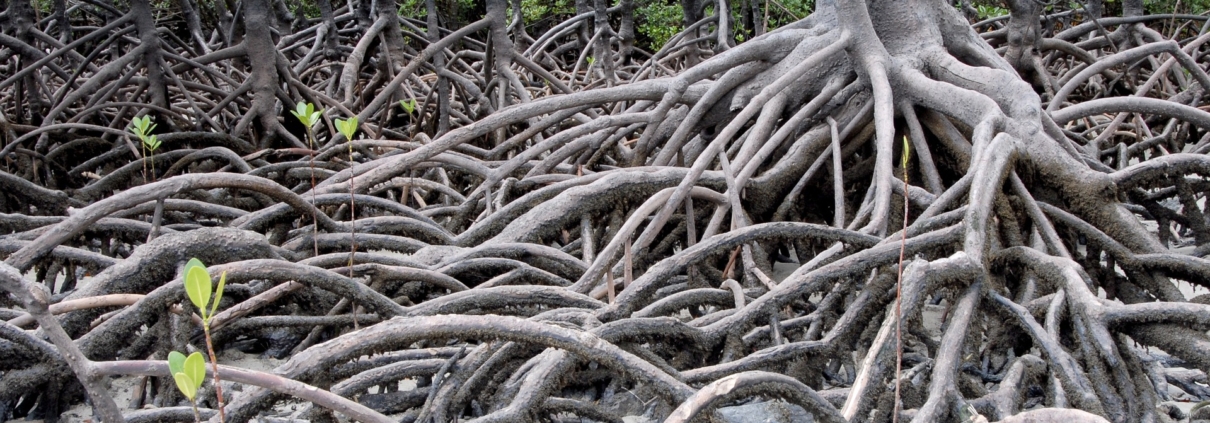What Makes Mangroves Unique?
Many of us probably have never heard of mangroves before. If you are reading this blog post, you are likely not one of those people. Your knowledge of the existence of mangroves is already something that makes you special.
Mangroves are what some ecologists would call a marginal ecosystem. This is because their limits are very well defined within a small range of extreme conditions. Being a marginal ecosystem is not unique in itself, but the members of these ecosystems are uniquely adapted to those specific set of conditions. Hydrothermal vents, alpine meadows, and desert oasis are other examples of marginal ecosystems.
Mangroves are uniquely adapted to the tidal fluxes and ranges of estuaries and coastlines of the tropics. They only thrive in those specific environments. This is why restoring degraded habitats can be so tricky, the entire system is based on a specific set of environmental factors. For mangroves, each mangrove tree species is adapted to certain values of water and soil salinity, how long their roots can be submerged in water, how deep the water can be, the type of muddy or sandy soils, how much wave action there is,… Many conditions and environmental factors. Nature is smarter than it looks, especially when it concerns marginal ecosystems.
Marginal ecosystems are low in biodiversity. This is because the environmental factors each creature has to be adapted to are extreme. Not that many species can handle the resulting stress of those extremes. Hydrothermal vents, for example, are dominated by worms, crabs and chemosynthesizing bacteria. The competition among species to survive in these extreme conditions is low, the pressure lies in surviving the conditions themselves. Mangroves are a bit of an outlier here because they are oddly biodiverse in many places across the globe.
Each mangrove forest is different from another and not all forests are biodiverse. Mangroves in Egypt only consist of two mangrove tree species. However, mangroves in Indonesia can have upwards of 40 mangrove tree species. Mangroves are a link between the land and sea, and so, species found in mangrove forests range from land mammals to corals. Mangroves act as nurseries to many fish, sharks, and turtle species. Approximate 20% of coral reef fish rely on mangroves during at least one phase of their life cycle. On the other side, mangrove canopies make for great nesting areas for many local or migratory birds. Mangrove roots are great attachment sites for bivalves such as oysters and mussels. Sponges and tunicates take advantage of mangrove roots too.
So, you see, even though mangroves aren’t as biodiverse as tropical rainforests or coral reefs, they are an essential link between the two ecosystems. Very few species are purely mangrove species. Most are at home in adjacent ecosystems; rainforests, rivers, seagrass meadows, coral reefs and only make use of mangrove forests periodically when the conditions are within their own biological limits or if there is food that can be consumed and shelter than can be taken advantage of.
Mangroves are pretty cool, aren’t they?
Plant some here: Get Started
Some Links
https://www.ncbi.nlm.nih.gov/pubmed/12071315
Author:
Layla Olefs
Sustainability Manager and Co-Founder of White Green Blue.
Layla is on a mission to create positive impact and to spread awareness about our beautiful home. As a marine conservationist and PADI Dive Master her passion is the marine world and, of course, mangroves. She is the author of our Ecology and Culture blog series. Stephen Olefs, our Community Development Coordinator, is taking the lead in our Green Tech blog series.









